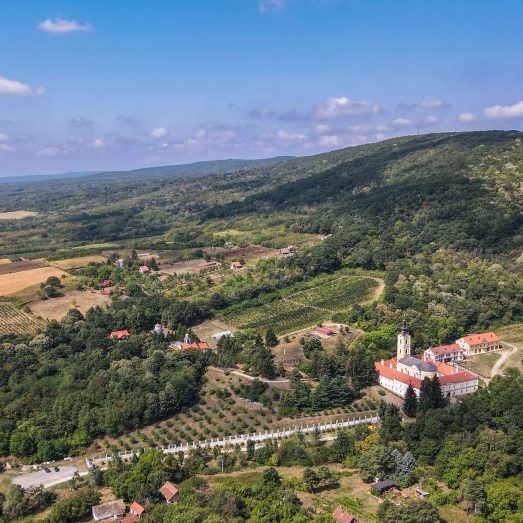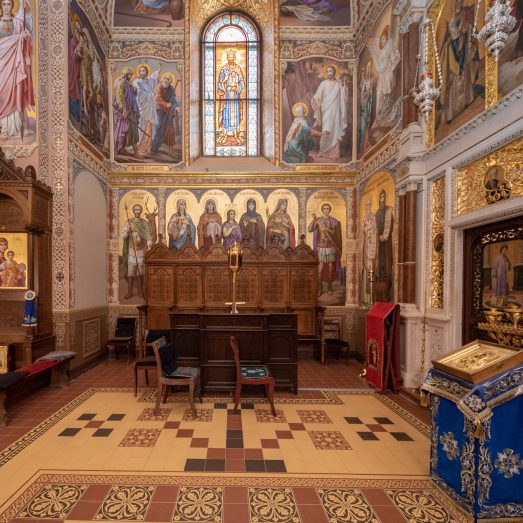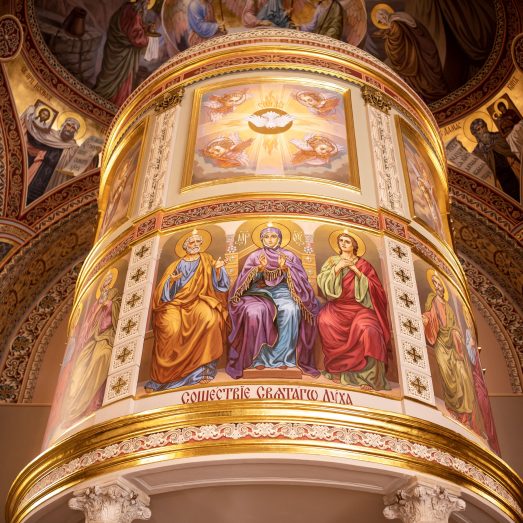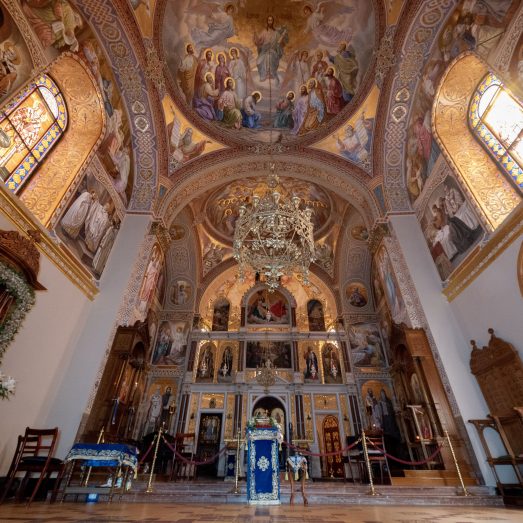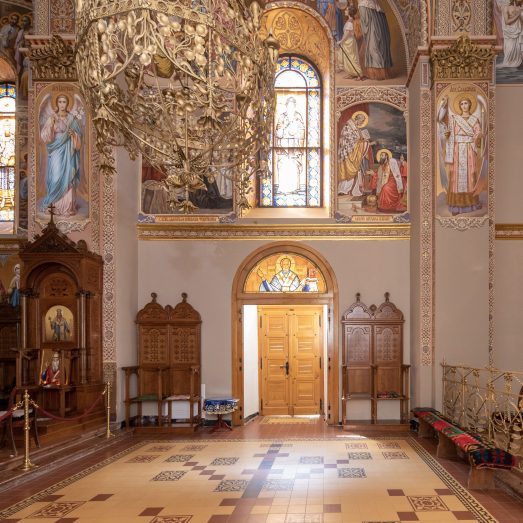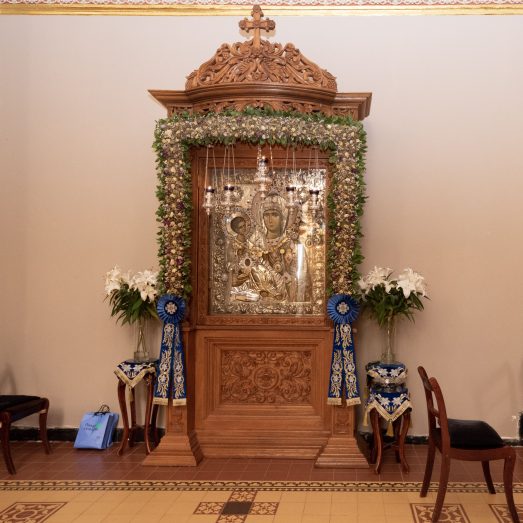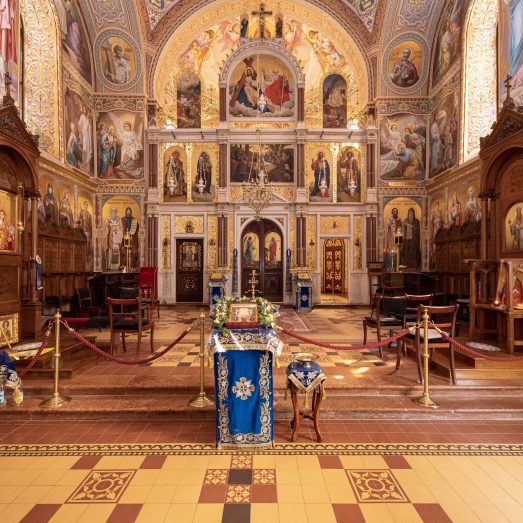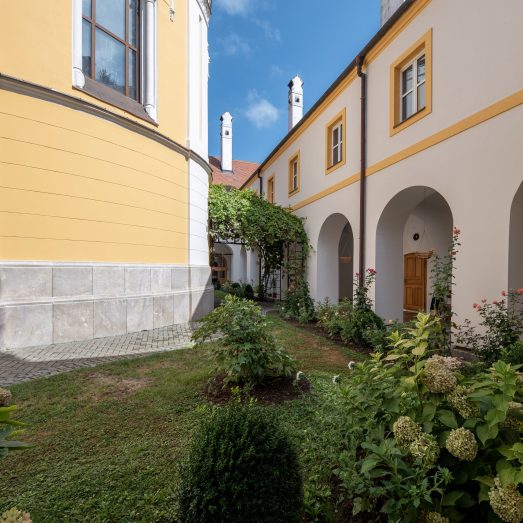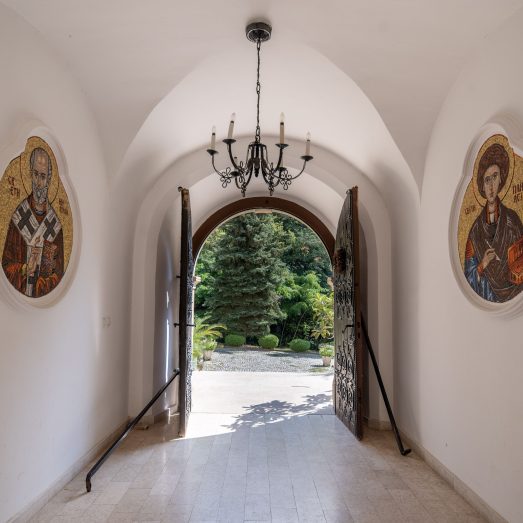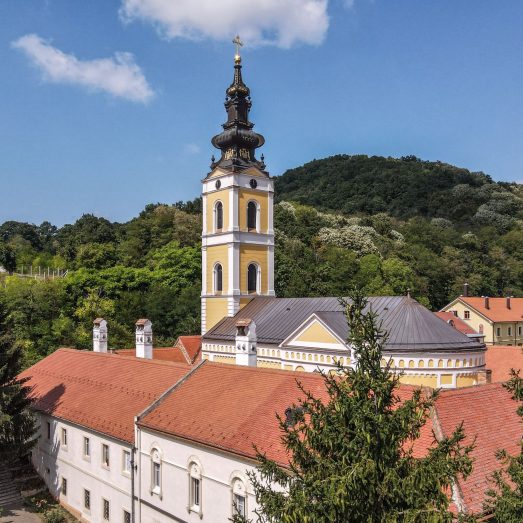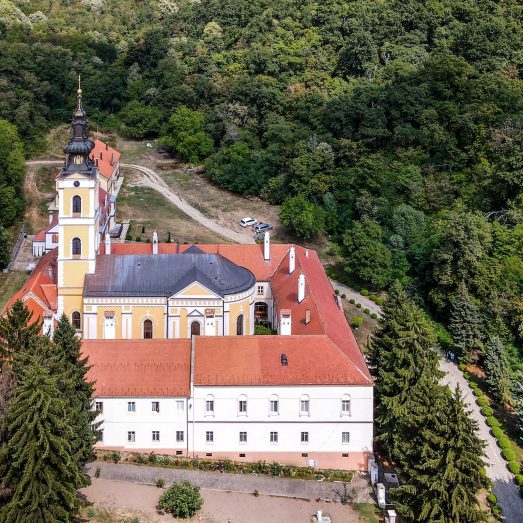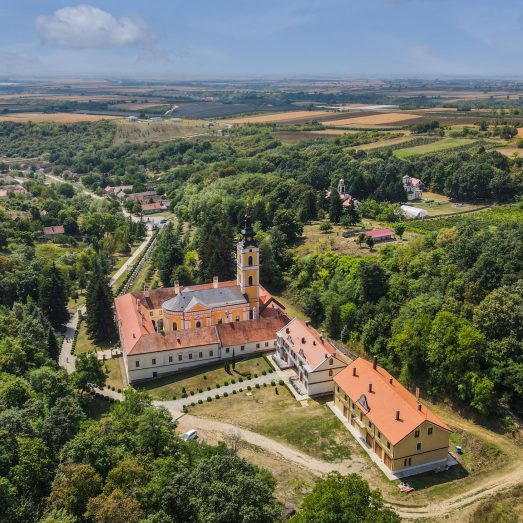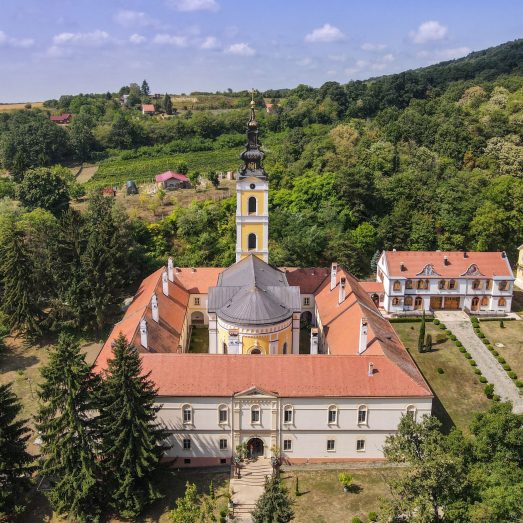The monastery church is dedicated to Translation of the relic of St. Nicholas (Prenos mošti sv. Nikole) (May 22)
According to lore, the Grgeteg Monastery is the endowment of Despot Vuk Branković (Zmaj Ognjeni Vuk), built for Vuk’s father Grgur Branković (Grgur the Blind) in the middle of the 15th century. Historical data on its existence can be traced in documents of Ottoman Turks throughout the 16th and 17th centuries. In the Great Viennese War, at the end of the 17th century, the monastery was set on fire, and valuables were looted. The reconstruction was started at the end of the 17th century and completed by the first decades of the 18th century by Bishop, later Metropolitan Isaiaja Đaković with the help of Metropolitan Vićentije Popović. This church, built in the spirit of Moravian architecture, was demolished and a new one was built on its foundations in the 1870s, with a bell tower. The patrons were Metropolitans Pavle Nenadović, Jovan Đorđević and Vićentije Jovanović Vidak, with the great help of monks and rich benefactors from the civic class. From the same period is the Chapel of the Nativity of Mary (Kapela Rođenja Bogorodice) in the bell tower on the west side of the church. Konaks were made gradually, and their construction was completed in the second half of the 18th century.
Due to the fires and earthquakes that struck the monastery complex in the 19th century, at the end of said century, extensive reconstruction of the church began during the time of Hegumen Ilarion Ruvarac, according to the idea of architect Herman Bole. The works were completed at the beginning of the 20th century, when the magnificent temple was consecrated. The chapel in the bell tower has also undergone some changes. During Second World War, the monastery complex was shelled, bombed, eventually blown up and completely devastated. Work on its restoration began in the 1950s and continued on several occasions, only to reach its full extent in recent decades, thanks to the monastery family and benefactors. In the process of renovation, a chapel was built in the konak dedicated to St. Seraphim of Sarov, the skete of the Transfiguration of Jesus next to the monastery cemetery, economic facilities, souvenir shop and landscape and infrastructural arrangement of the access to the monastery.
The iconostasis of the Church of St. Nicholas, done on the masonry in the second half of the 18th century by Jakov Orfelin, was demolished during the restoration of the church, and only two icons of St. Nicholas and St. John the Baptist, made on a wooden base, were preserved. The painting of icons on the iconostasis in the new church was entrusted to Uroš Predić, a famous Serbian painter, one of the most important representatives of academic realism and church painting. They still captivate by their beauty today. In the church, at the time of Archimandrite Ilarion Ruvarac, there was wall painting, developed during the 19th century, characterized by applied ornamentation. Contemporary wall painting in the same church is under construction. It is the work of Russian painters Segej and Andrey Saxonov, according to the Orthodox model of painting saints whose depictions fit into the existing ornamentation.
At the beginning of the 20th century, the icons for the iconostasis of the Chapel of the Nativity of Mary (kapela Rođenja Bogorodice) in the bell tower were made by Pjer Križanić, and after the Ustasha destruction and post-war turmoil, only one was preserved. Contemporary wall painting of the chapel is the work of Dragomir Jašović from the last decade of the 20th century. The contemporary iconostasis was painted by the nun Magdalina from the Gračanica monastery.
During the 20th century, the iconostasis of the Chapel of St. Seraphim of Sarov was painted by the nuns Porfirija and Vaskresija, and the wall paintings by the Greek masters. From the same period is the wall painting of the skete of the Transfiguration of Jesus, the work of Rade Savić and the iconostasis icon, the work of the nun Arsenija.
Church of St. Nicholas (Crkva Sv. Nikole) holds the icon of Trojeručica made in the Hilandar Monastery. Ilarion Ruvarac (1832-1905), the first member of the Serbian Royal Academy, Yugoslav Academy, officer of Matica Srpska, rector of the Karlovci Seminary, holder of the Order of Sveti Sava, stayed and died in the Grgeteg Monastery. His work in the field of national history was assessed as a contribution to critical reasoning on medieval Serbian history. He was buried in a place halfway between the monastery and the monastery cemetery.
Liturgy schedule: Sundays and church holidays at 8.30 a.m.; half-night prayer on weekdays at 4.45 a.m., early liturgy at 5.45 a.m.
TOURIST INFORMATION: The monastery is open in the period 4.45 a.m. -7.00 p.m. (during the summer), 04.45 a.m. -5.00 p.m. (during the winter). No advance notice is required, and visitors can visit the Church of St. Nicholas. Decent dress is implied.
